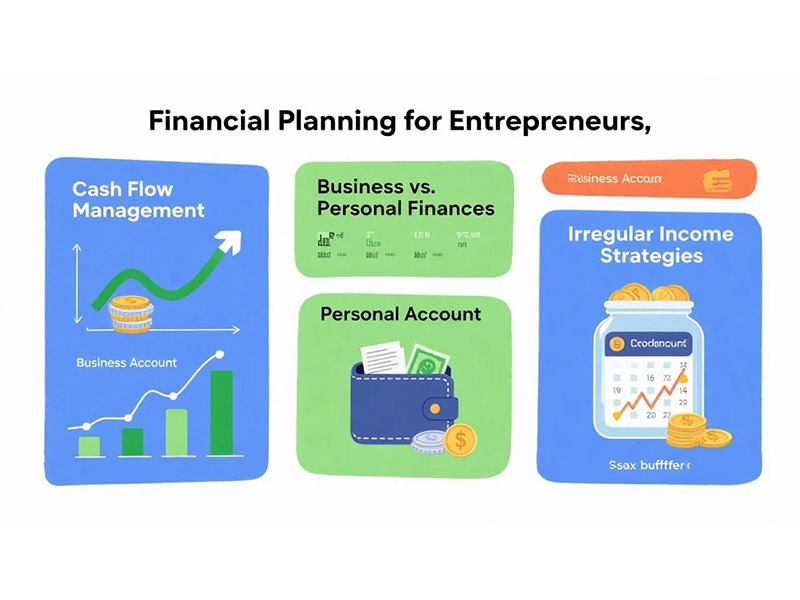The sandwich generation—adults simultaneously caring for aging parents while supporting their own children—faces unprecedented financial challenges. This demographic, typically ranging from their 40s to 60s, must navigate complex decisions about elder care, college funding, and their own retirement planning, often while managing peak career responsibilities and their highest earning years.
With increasing life expectancy, rising healthcare costs, and delayed financial independence among young adults, sandwich generation pressures are intensifying. Nearly half of adults in their 40s and 50s have a parent aged 65 or older while also supporting a child, creating a perfect storm of competing financial obligations that can derail even well-planned financial strategies.
This comprehensive guide provides frameworks for managing these competing priorities, strategies for optimizing limited resources, and approaches for making difficult financial decisions that protect both your family’s immediate needs and your own long-term financial security.
Understanding Sandwich Generation Financial Pressures
The Scope of Dual Caregiving Costs
Elder Care Financial Impact: The average family spends approximately $1,986 monthly on elder care, with costs varying dramatically based on care level and location. These expenses often arise suddenly and include:
- Home care services: $25-50 per hour for home health aides
- Adult day care: $1,500-3,000 monthly for daily supervision and activities
- Assisted living facilities: $3,000-6,000 monthly depending on location and services
- Memory care units: $4,000-8,000 monthly for specialized dementia care
- Nursing home care: $6,000-12,000+ monthly for skilled nursing facilities
- Medical expenses: Uncovered healthcare costs, medications, and equipment
- Home modifications: Accessibility improvements, safety equipment, and technology
Adult Children Support Costs: Extended financial support for adult children has become increasingly common:
- College expenses: $20,000-70,000+ annually for tuition, room, board, and expenses
- Post-graduation support: Average of $1,000-2,000 monthly for living expenses, job search, or graduate school
- Housing assistance: Down payment help, co-signing loans, or providing temporary housing
- Healthcare coverage: Extended family health insurance or direct medical expense support
- Career transition support: Funding for additional education, certification programs, or unpaid internships
Hidden Costs and Opportunity Costs: Beyond direct expenses, sandwich generation caregiving creates additional financial impacts:
- Reduced earning potential: Time away from work for caregiving responsibilities
- Career advancement limitations: Missed opportunities due to caregiving commitments
- Health impacts: Stress-related health issues affecting productivity and medical costs
- Social security implications: Reduced earnings affecting future social security benefits
- Retirement savings disruption: Decreased ability to maximize peak earning year contributions
Demographic and Economic Trends Intensifying Pressures
Longevity and Healthcare Advances: Increased life expectancy means longer periods of potential caregiving responsibility, often including expensive end-of-life care that can span several years.
Rising Healthcare Costs: Medical inflation consistently outpaces general inflation, making healthcare planning particularly challenging for families managing multiple generations.
Delayed Financial Independence: Economic factors including student debt, housing costs, and job market changes have extended the period young adults require family financial support.
Retirement Security Crisis: Many current seniors lack adequate retirement savings, increasing their dependence on adult children for financial support.
Strategic Framework for Multi-Generational Financial Planning
Priority-Based Resource Allocation
The Airplane Oxygen Mask Principle: Like airline safety instructions that advise securing your own oxygen mask before helping others, sandwich generation financial planning must prioritize your own financial security to ensure long-term family stability.
Financial Priority Hierarchy:
- Your basic needs and emergency fund: Maintain financial stability and emergency reserves
- Your retirement savings: Cannot be borrowed or replaced like education funding
- Parent care necessities: Essential care and safety requirements
- Your children’s immediate needs: Housing, food, healthcare, and basic education
- Enhanced elder care options: Comfort and convenience improvements
- Children’s college funding: Important but can be financed through loans
- Children’s additional support: Post-graduation assistance and luxury education options
This hierarchy helps make difficult decisions when resources are limited, ensuring that the most critical needs are met while avoiding financial decisions that compromise long-term family security.
Comprehensive Financial Assessment
Multi-Generational Financial Inventory:
Your Financial Position:
- Current income and projected earnings through retirement
- Existing retirement savings and projected needs
- Emergency fund adequacy for expanded responsibilities
- Insurance coverage including disability and long-term care
- Estate planning documents and beneficiary designations
Parent Financial Assessment:
- Social Security and pension income
- Medicare and supplemental insurance coverage
- Savings, investments, and liquid assets
- Home equity and other real estate holdings
- Long-term care insurance and coverage gaps
- Estate planning status and potential inheritance
Children’s Financial Needs Analysis:
- Education funding requirements and timelines
- Existing education savings (529 plans, etc.)
- Expected family contribution for college costs
- Post-graduation support expectations and duration
- Health insurance and other benefit coverage needs
Elder Care Financial Strategies
Maximizing Parent Resources Before Family Contributions
Government Benefit Optimization: Many families overlook available government assistance programs that can significantly reduce out-of-pocket care costs:
Medicare and Medicaid Navigation:
- Medicare Part A covers some skilled nursing and home health services
- Medicare Part B covers medical equipment and some therapy services
- Medicaid covers long-term care for qualifying low-income seniors
- Veterans benefits provide additional care coverage for eligible veterans
- State-specific programs offer various support services and subsidies
Asset Protection and Spend-Down Strategies: Work with elder law attorneys to understand legal methods for protecting parent assets while qualifying for government assistance:
- Medicaid planning strategies including asset transfers and trust structures
- Veterans Aid and Attendance benefit optimization
- Medicare Supplement insurance evaluation and selection
- Long-term care insurance claim maximization
Family Caregiving Cost Management
Home Care Optimization: When possible, home care often provides better outcomes at lower costs than institutional care:
Cost-Effective Care Arrangements:
- Combine family caregiving with professional services during peak need periods
- Coordinate care among multiple family members to reduce individual burden
- Utilize adult day care programs to enable continued employment
- Implement technology solutions for monitoring and safety
Tax Advantage Utilization:
- Dependent care tax credits for qualifying elder care expenses
- Medical expense deductions for care costs exceeding 7.5% of adjusted gross income
- Flexible Spending Account (FSA) usage for qualifying care expenses
- State tax benefits for caregiving expenses in some jurisdictions
Long-Term Care Insurance Considerations
Evaluating Long-Term Care Insurance: For sandwich generation families, long-term care insurance serves dual purposes: protecting parent assets and reducing family financial burden.
Policy Evaluation Criteria:
- Coverage amounts and benefit periods aligned with local care costs
- Inflation protection to maintain purchasing power over time
- Flexibility in care settings (home, assisted living, nursing home)
- Elimination periods and premium payment structures
- Insurance company financial stability and claims payment history
Family Policy Coordination: Consider coordinating long-term care insurance across family members to maximize coverage efficiency and reduce overall premium costs.
College Funding While Managing Elder Care
Strategic Education Funding Approaches
Balancing College Funding with Other Priorities: Unlike retirement savings, education can be funded through loans, scholarships, and alternative pathways, making it lower priority when resources are constrained.
529 Plan Optimization:
- Continue contributing to 529 plans when possible, taking advantage of tax benefits
- Consider grandparent-owned 529 plans that don’t affect financial aid calculations initially
- Explore state tax deductions and credits for 529 contributions
- Understand 529 plan flexibility for multiple beneficiaries within families
Alternative Education Funding Strategies:
- Community college for first two years to reduce overall costs
- In-state public universities for significantly lower tuition costs
- Merit-based scholarship pursuit based on student achievements
- Work-study programs and part-time employment during college
- Employer tuition assistance programs for working students
Managing College Costs During Financial Stress
Financial Aid Optimization: Understanding how elder care expenses affect financial aid calculations can help maximize assistance:
- Elder care expenses may reduce available income for college funding in aid calculations
- Multiple children in college simultaneously increases aid eligibility
- Special circumstances appeals can address unusual financial hardships
- Asset protection strategies that don’t negatively impact aid eligibility
Communication and Expectation Management: Clear communication with children about financial realities helps avoid unrealistic expectations:
- Honest discussions about available education funding
- Exploration of alternative career paths that don’t require expensive education
- Understanding of loan implications and post-graduation financial responsibilities
- Family contribution expectations and limits
Retirement Planning Under Sandwich Generation Pressure
Protecting Your Retirement Security
Non-Negotiable Retirement Savings: Despite competing priorities, certain retirement savings should continue:
Employer Match Maximization: Always contribute enough to receive full employer 401(k) matching—this represents immediate 100% return on investment that cannot be replicated elsewhere.
Tax-Advantaged Account Maximization:
- Continue maximal contributions to 401(k), 403(b), or similar employer plans
- Utilize catch-up contributions if over age 50 ($7,500 additional for 401(k) plans)
- Maintain IRA contributions when possible for additional tax-advantaged growth
- Consider Roth conversions during lower-income years due to caregiving
Retirement Timeline Adjustments
Extended Working Years Planning: Many sandwich generation adults extend their working years to recover from caregiving financial impacts:
Career Optimization Strategies:
- Maximize earning potential during peak career years
- Pursue advancement opportunities that accommodate caregiving responsibilities
- Develop skills and credentials that support extended career longevity
- Build consulting or part-time work capabilities for gradual retirement transitions
Social Security Optimization: Delayed retirement credits provide 8% annual increases in Social Security benefits for each year retirement is delayed beyond full retirement age until age 70.
Insurance and Risk Management
Comprehensive Family Insurance Strategy
Long-Term Care Insurance: Given the financial impact of elder care, long-term care insurance becomes particularly valuable for sandwich generation families:
Personal Coverage Evaluation:
- Purchase coverage while healthy and premiums are lower
- Consider hybrid life insurance with long-term care riders
- Evaluate spousal coverage coordination and shared benefits
- Understand elimination periods and benefit coordination with other resources
Disability Insurance Enhancement: Increased family responsibilities make disability insurance even more critical:
- Evaluate both short-term and long-term disability coverage adequacy
- Consider supplemental individual policies beyond employer coverage
- Understand how disability benefits coordinate with other family income sources
- Ensure coverage amounts reflect increased family financial responsibilities
Life Insurance Optimization
Multi-Generational Life Insurance Planning: Life insurance needs become more complex when supporting multiple generations:
Coverage Needs Analysis:
- Increased coverage needs due to extended family financial responsibilities
- Term life insurance for temporary increased needs during peak obligation years
- Permanent life insurance for estate planning and long-term wealth transfer
- Consider life insurance on aging parents to help cover final expenses and care costs
Tax Planning for Multi-Generational Families
Optimizing Tax Benefits Across Generations
Dependent and Caregiving Tax Benefits:
- Claiming aging parents as dependents when income and support tests are met
- Medical expense deductions for parent care costs exceeding 7.5% of AGI
- Dependent care credit for qualifying elder care expenses
- Education tax credits and deductions for children’s college expenses
Multi-Generational Tax Strategies:
- Income shifting opportunities within family to optimize overall tax burden
- Estate and gift tax planning for potential inheritance and family financial support
- Charitable giving strategies that provide tax benefits while supporting family causes
- State tax considerations for families spanning multiple states
Estate Planning Coordination
Family Estate Planning Integration: Sandwich generation families require estate planning that addresses multiple generations:
Document Coordination:
- Power of attorney and healthcare directive coordination across generations
- Beneficiary designation optimization across all family accounts and policies
- Trust structures that can benefit multiple generations efficiently
- Coordination of parent estate plans with your own financial planning
Technology and Systems for Multi-Generational Management
Financial Management Tools
Comprehensive Financial Tracking: Managing multiple generations requires robust systems for tracking expenses, income, and obligations:
Technology Solutions:
- Family financial management apps that accommodate multiple generations
- Shared calendar systems for coordinating care and financial obligations
- Document storage systems accessible to multiple family members
- Communication platforms for coordinating family financial decisions
Professional Coordination:
- Financial advisors experienced in multi-generational planning
- Elder law attorneys for parent care and estate planning
- Tax professionals familiar with multi-generational tax strategies
- Insurance agents capable of coordinating coverage across generations
Creating Your Sandwich Generation Financial Plan
Assessment and Priority Setting (Month 1-2)
Comprehensive Financial Assessment:
- Complete financial inventory for all family members
- Assess immediate and projected care needs for parents
- Evaluate children’s education and support timelines
- Analyze current financial capacity and projected changes
Priority Clarification:
- Establish non-negotiable financial commitments
- Identify areas where compromises may be necessary
- Set realistic expectations for all family members
- Create communication plan for ongoing financial discussions
Strategy Implementation (Month 3-6)
Financial System Optimization:
- Maximize available government benefits and assistance programs
- Optimize insurance coverage across all family members
- Establish emergency funds adequate for expanded responsibilities
- Create tax-efficient structures for family financial support
Professional Team Assembly:
- Engage financial advisor experienced in multi-generational planning
- Establish relationships with elder law attorney and tax professional
- Coordinate with healthcare professionals for care planning
- Build support network of other sandwich generation families
Ongoing Management and Adjustment (Ongoing)
Regular Review Schedule:
- Quarterly family financial reviews and adjustments
- Annual comprehensive planning assessments
- Immediate adjustments for changes in family circumstances
- Ongoing communication and expectation management
Adaptation and Optimization:
- Monitor changes in government benefits and assistance programs
- Adjust strategies based on evolving family needs and financial capacity
- Optimize tax strategies and benefit coordination
- Plan for transitions including parent care escalation and children’s independence
Conclusion: Building Sustainable Multi-Generational Financial Security
Sandwich generation financial planning requires a delicate balance between competing priorities, realistic assessment of available resources, and strategic decision-making that protects long-term family financial security while meeting immediate needs. The key lies in understanding that you cannot support your family indefinitely if you compromise your own financial stability.
Success requires comprehensive planning that addresses all generations simultaneously, maximizes available resources and benefits, and makes strategic trade-offs based on realistic assessments of family capacity and priorities. Remember that this is typically a temporary phase that requires intensive management but will eventually evolve as children achieve independence and parent care needs are resolved.
Start by conducting a thorough assessment of your multi-generational financial situation, establishing clear priorities, and building the professional support network needed to navigate these complex decisions. With proper planning and realistic expectations, it is possible to support multiple generations while maintaining your own path to financial security.
The sandwich generation phase, while challenging, often represents your peak earning years and your greatest opportunity to build lasting financial security for your entire family. By approaching these responsibilities strategically and maintaining focus on long-term sustainability, you can successfully navigate this complex period while building a strong financial foundation for your family’s future.









